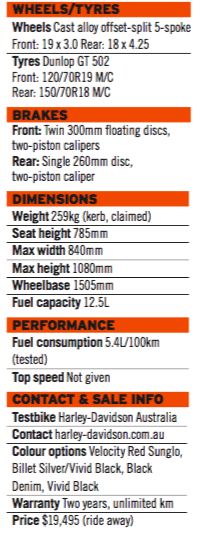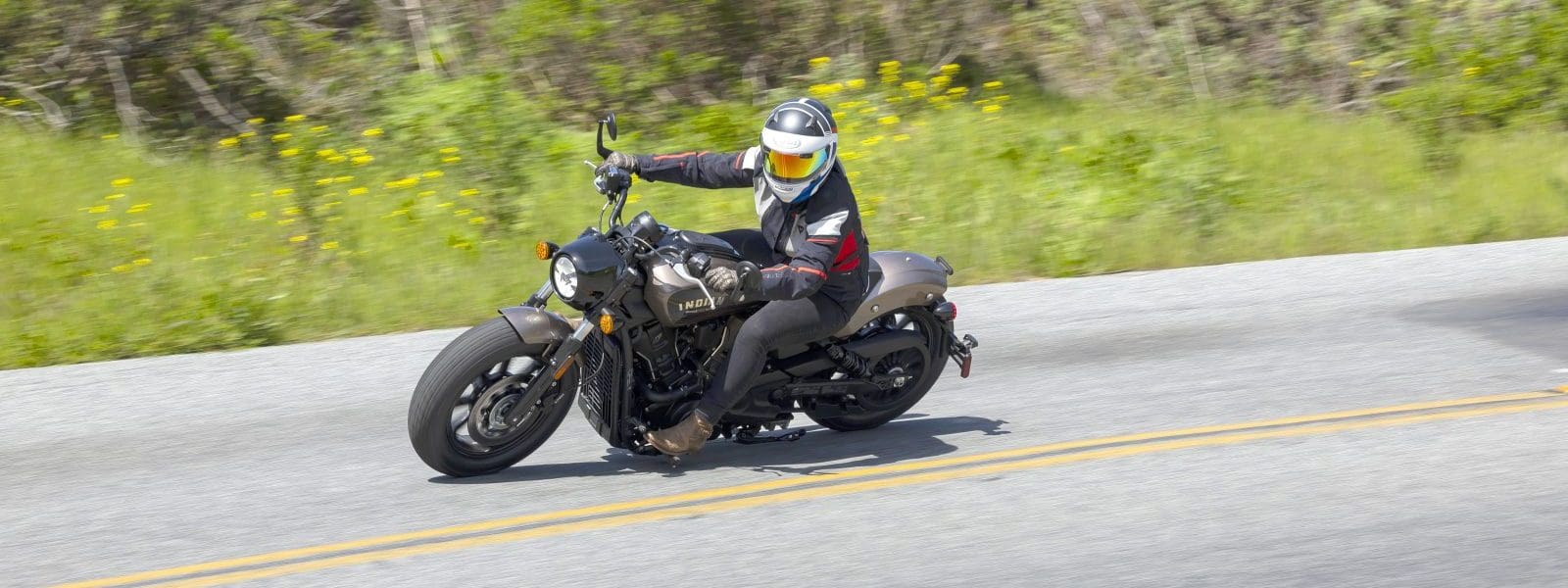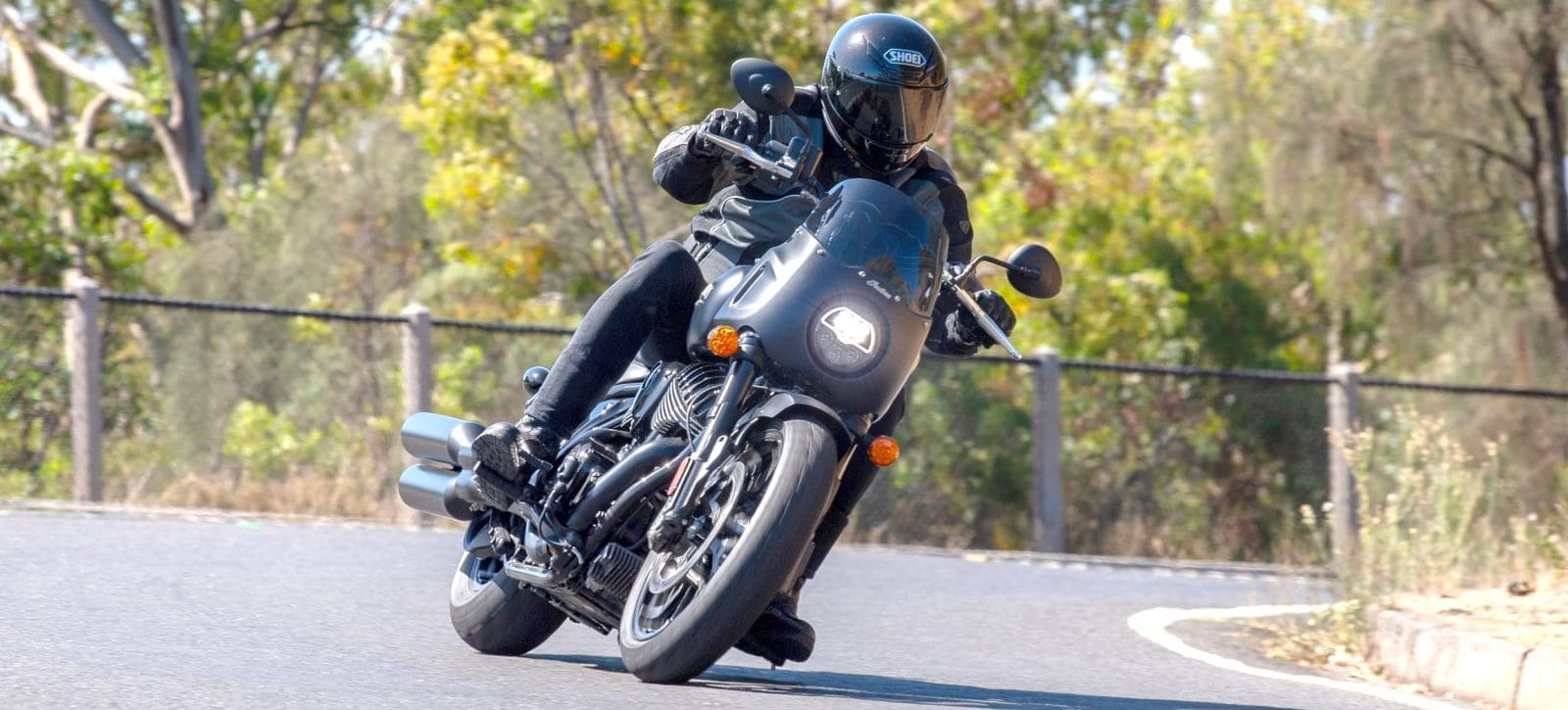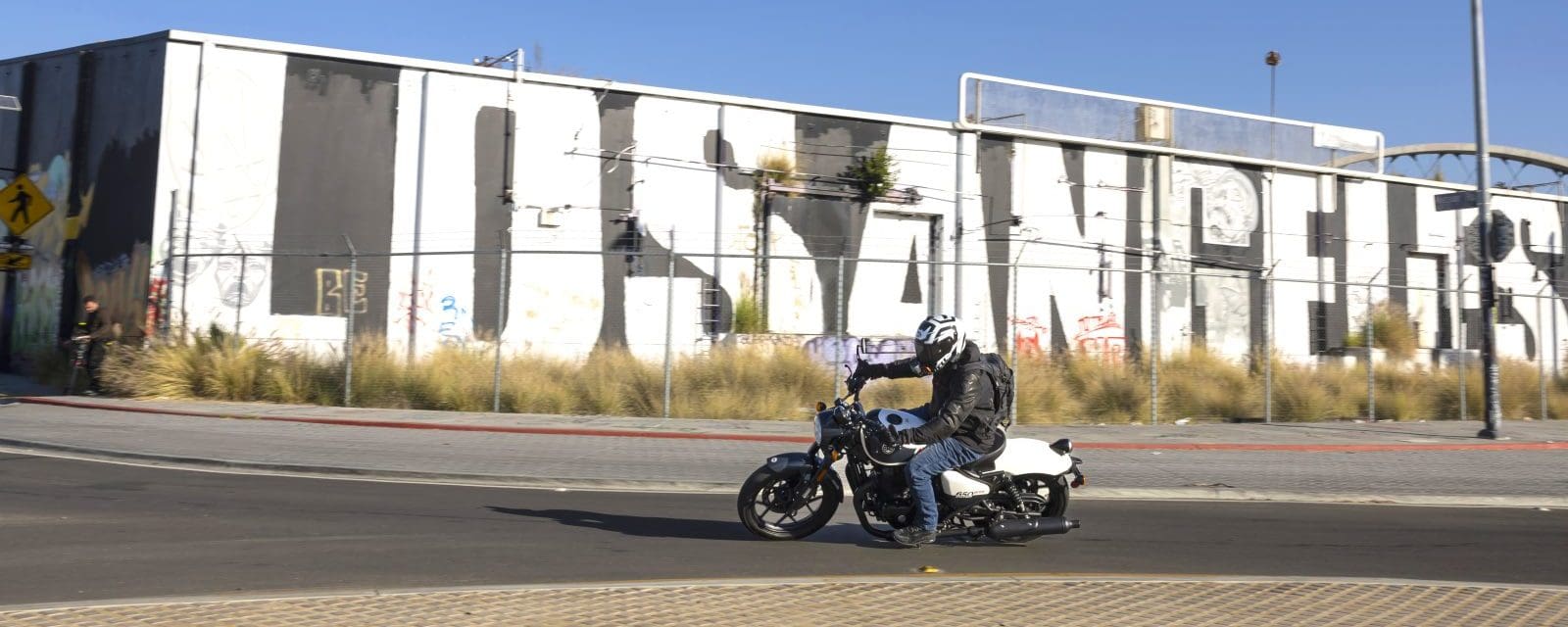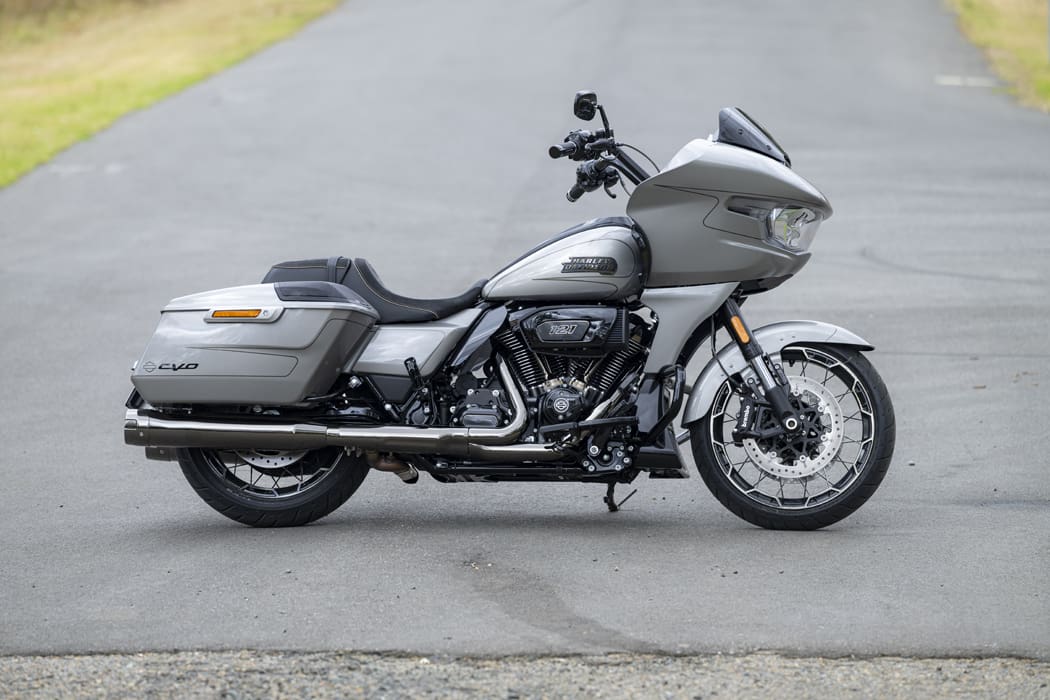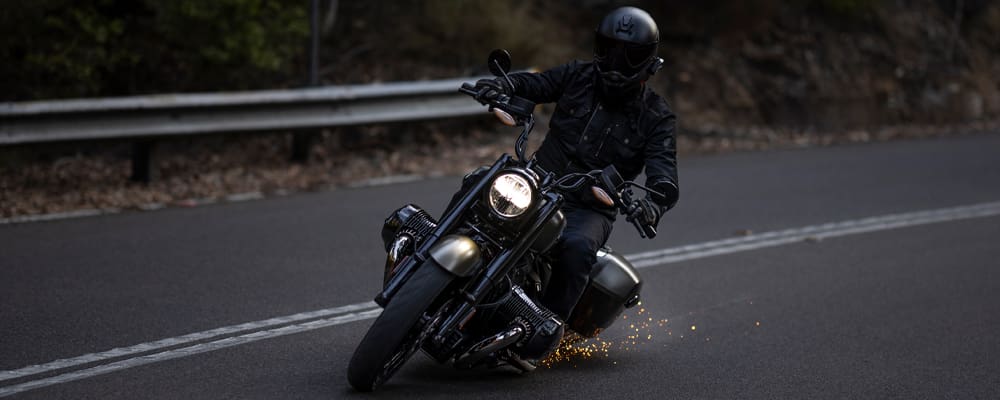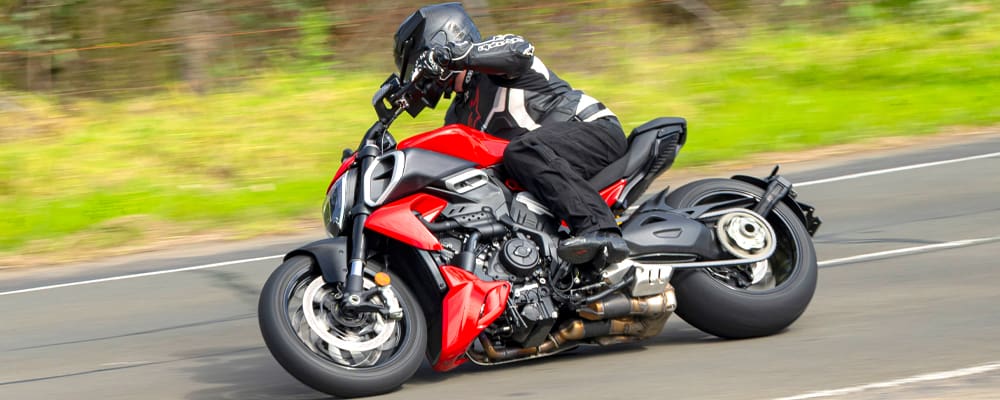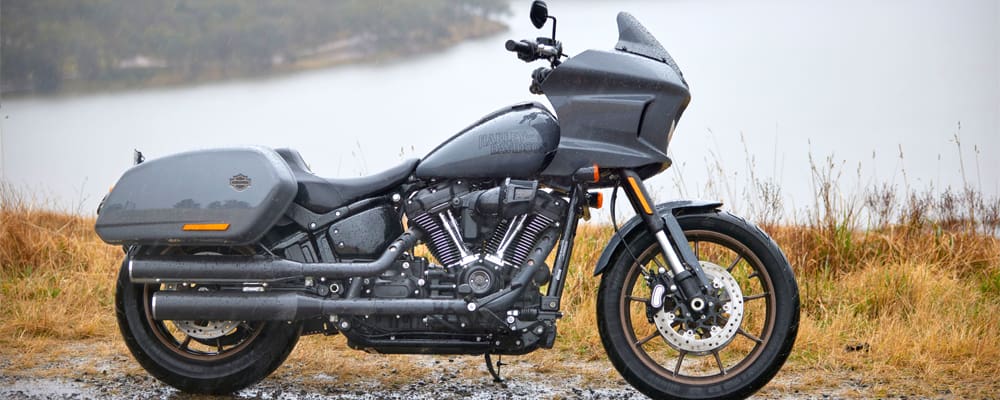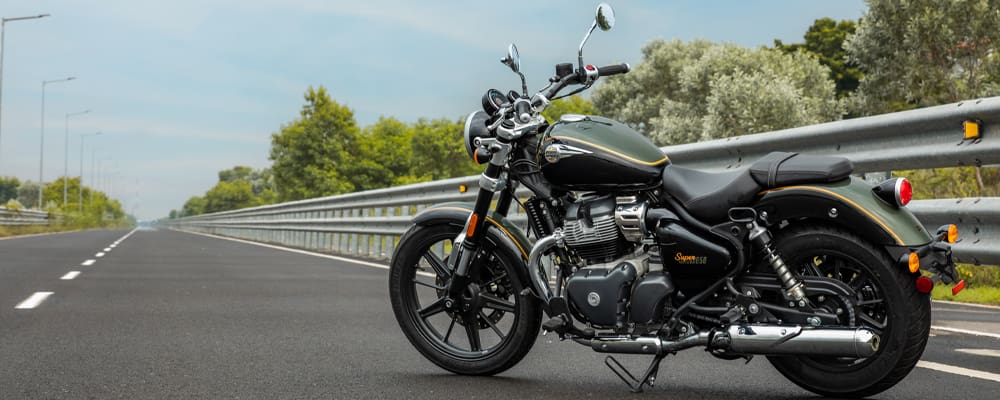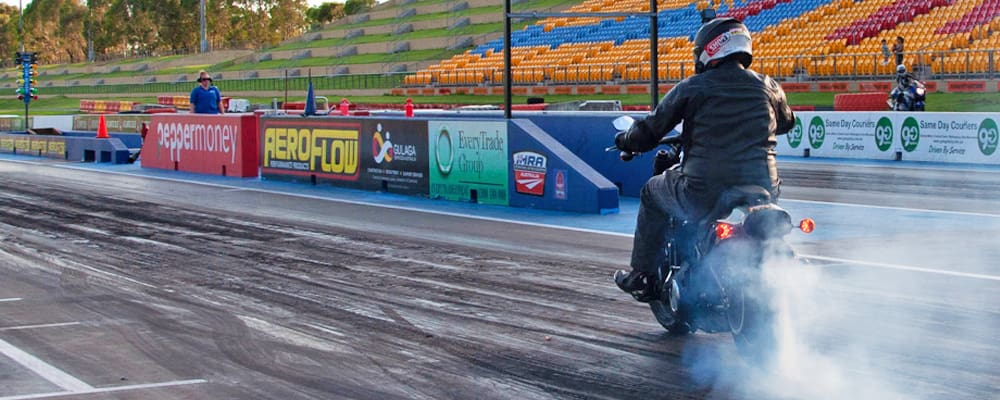Years ago, well before the term Café Racer had been high jacked by hipsters – in fact it was before Hipster was even a word – I was out for on my trusty CBR1000 when I spied a custom-built XR1000. This thing had clip-on bars, a single seat, a wrapped shorty exhaust system, rearset ‘pegs and an awesome black paint scheme with a mural of a coffin on the tank (as you do). At the time it was the best looking Harley-Davidson I had ever seen, and I guess it kick-started my interest in the Harley-Davidson’s sportster range.
When first details of Harley’s 2016 Roadster model began to filter through my interest was piqued because it reminded me of that XR1000 I had spied a quarter of a century earlier.
While based on the the Forty-Eight model, the Roadster was being touted as garage build-style machine with mid-mounted controls and a degree of effort put into its handling department. And while it may look to some like Harley-Davidson has simply taken an existing 1200 from its Sportster range and given it a few cosmetic tweaks, a much thought has gone into producing a bike that captures the Hot Rod feel of the 1950’s and 1960’s while providing a few 21st century touches which make it a pleasure to ride.
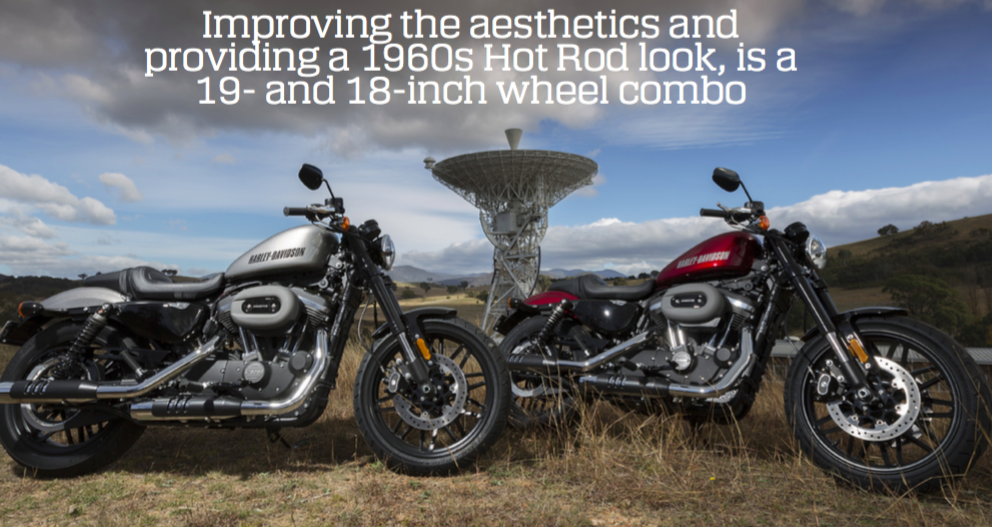
To the casual observer, Harley-Davidson may appear to be a manufacturer that does not like change to happen too quickly, but that doesn’t mean it’s behind the times. Harley-Davidson is a brand, and as such it needs to ensure certain branding icons are worked into each new model. Styling cues need to be instantly recognisable as H-D, yet be unique enough to have the bike distinguishable to other models. Sure, someone with limited knowledge of the brand would struggle to identify individual Harley-Davidson’s in the carpark of a HOG chapter meeting, but they would know they are all Harley-Davidsons – any ring-ins would be easily identified.
The Challenge for Roadster engineers was to capture the company’s sportster styling and wrap it in a great handling package, and with all due respect that’s not something Harley-Davidson is most famous for.
So what’s it got?
The Roadster runs the same rubber-mounted, air-cooled 1202cc v-twin engine as the 1200 Custom and Forty-Eight, shoehorned into a double-cradle, tubular steel sportster frame. Harley does not like to talk power figures, but is happy to reveal the Roadster’s Mill produces the same 98Nm of torque at 3750rpm as the other 1200 Sportster models.
While the engine is a well known H-D mill, the Roadster’s chassis has geometry numbers unique to the model. Helped along by the 19-inch front wheel the Roadster has a 140mm trail to 28.9º rake, compared to the 132mm trail and 29.6º rake on the Forty-Eight. The ability to reduce the rake and the the trail simultaneously is achieved via new, beefier triple clamps, the 19-inch front wheel anf longer rear suspension.
The Roadster is also fitted with an inverted fork, and while upside-down suspenders are not totally new to Harley-Davidson, it’s still something to highlight as the suspension on the Roadster is one of the reasons the bike shines. The 43mm inverted single-cartridge fork has tri-rate springs, replacing the xxxx rod in other Sportster models) while the rear suspension is twin gas-charged emulsion coil-over shocks with adjustable pre-load. Suspension travel is 115mm up front and 82mm at the rear. Agreed, that’s not a huge amount of movement, but it’s more than other bikes in the Sportster stable. The new suspension with a longer rear shocks gives the Roadster a racier, ass-up, head-down appearance and helps shift the rider into a racier position. The suspension is firm – as you would want on a sporty model – but it’s not too harsh. There’s a big difference between crashing into a dip on a B-grade road and bouncing through it – the Roadster does more of the later. It’s not top-shelf WSBK kit so it doesn’t have the same high-speed compression capabilities as a superbike, but it stops your spine from being compressed.
Another big upgrade for the Roadster over its Sportster brethren is the fitment of ABS-equipped twin 300mm discs on the front wheel, each clamped by twin-piston calipers. Up back there’s a 260mm single disk also clamped by a twin-piston caliper.
Helping with the ascetics, and also with the handling, is a 19×00-inch (front) and 18×00-inch(rear) wheel combo. The big front wheel and low profile tyre provides a little extra dollop of Café Racer style and the lightweight, cast aluminum five-spoke, offset-split design look neat while sitting stationary and resembles wire spoke wheels when spinning.
Subtlety is one of the strong points of the Roadster, and there’s a number of little touches I really like. The seat and cut-down rear fender work with the slim profile and reflect the café racer style of the 1960s. The standard seat provides enough space for two-up riding or the pillion seat can be swapped out for the Café Sole seat from the accessories catalogue. While you are sifting through the accessories catalogue make sure you place your order for the Screaming Eagle air cleaner and loud pipes (see breakout).
Another big winner in the styling department is the low-set flat “Semi Ace” handlebar which is further exaggerated by the lifted 12.5 litre fuel tank. In its standard form the Roadster looks like a custom builder has given it a mild but stylish makeover.
To set it apart from the Forty-Eight and 1200 Custom, Harley has installed mid-ship controls. This must have been a real head-scratcher for the engineers. To provide a true Café Racer garage-built feel the Roadster needs a lean forward seating position, or upright at the very least. Rear-set pegs would have probably been a step too far for H-D, and looking at the architecture of the bike would have been a nightmare to fit, so mid controls may have been the only option. Problem is the Sportster frame is no skinny-mini, and then the right-hand ‘peg also needs to clear the exhaust pipe adding additional width. The left-hand ‘peg needs to match otherwise the bike will feel lopsided. Add to this the fact that the rubber sleeved pegs are exceptionally long and you have a set-up that feel great when riding, but clumsy when you come to a stop. The width and position of the pegs constantly snagged on the hem of my jeans and placing my feet on the ground was a constant battle requiring either an overly exaggerated, wide foot stance (Watch you toes as cars pass too close) or a weird right-foot forward, left-foot back approach – I never really felt comfortable with either.
From a design brief point-of-view (foot-pegs aside) the Roadster is a winner, it’s meant to feel like a stripped-down garage build and from the moment you climb aboard that’s how it feels. Despite having a scalloped seat, the seat height of 755mm is 45mm higher than the Forty-Eight thanks to an equal amount of additional ground clearance provided by the new suspension. This makes you feel like you are sitting on the bike than in it, and it provides a good view of the world.
Reaching forward to the low and flat ‘bar your line of sight is directed to what H-D describes as a dual function gauge. This means it’s a single pod analogue unit with a digital LCD insert. Speed, gear selection, odometer and trip are all displayed on the LCD display, while the analogue clock needle indicates RPM. Unfortunately, the combination of sun glare and a tinted visor made reading the digital display extremely difficult making hard work of staying on the good side of the Highway Patrol.
Everyone knows a Harley-Davidson in standard trim is a restricted, muted beast, and the best way to free the inner beast is to head straight to the Screamin’ Eagle catalogue, however, the Roadster might just be the one exception to this rule, from an aural point of view at least. The Shorty-dual exhaust with chrome tapered mufflers and stylish slots to resemble the strip-back techniques of old emit what H-D describes as a soul-satisfying sound.

The handlebar switch blocks are standard H-D fair with the self-cancelling indicator switches separated left and right. Thumbing the starter drives home the fact you are riding a big American v-twin engine with a minimalist small frame wrapped around it. From the moment it bursts to life with its uneven firing intervals – courtesy of its 270-degree crank – things start to rattle and roll. The Roadster takes on the demeanor of a petulant child demanding to get underway. Reaching for the non-adjustable clutch and break levers simultaneously in preparation for departure reveals it’s quite a reach to both if you like to have more than three fingers on each lever. The cable actuated clutch has the usual H-D feel about it and like all gearboxes from the American marque you are left in no doubt when first gear on the five-speed box has been selected, then it’s a decent throw to each gear from there.
With just 259kg to push around, and 98Nm or torque on call to do it, the Roadster has no trouble accelerating from a standing start to the speed limit at a rapid pace thanks to an even spread of torque that requires little coaxing. It’s not in the same arm-pulling class as the 111Nm punched out by the high-performance, water-cooled V-Rod, but it is just as addictive. Having oodles of torque on tap makes city riding a breeze and also allows you to ride just about everywhere in third gear. Whether it be negotiating the city traffic or out on the open road, 3000rpm is the sweet spot for this engine. Use forth when you have a straight, open road section and top-gear fifth for the freeways. Despite having a rev limiter that cuts in at 6000rpm, revving the engine beyond 4500rpm is a fruitless exercise, this engine is a slow revver which means less tap dancing on the gear selector and more riding enjoyment. Clutchless up-shifts are a breeze and if you are feeling really lazy, the five-speed box will accept a downshift with a well-timed throttle blip.
Once free of the stop/start city traffic is where the Roadster’s personality really shines though. This bike has been built to look and feel like a garage-built custom and that’s exactly what it is like to ride. The advantage is you get better handling and the comforting knowledge that it has been built by someone slightly more credentialed than a garage enthusiast.
On a smooth and twisting open road is where the Roadster really shines. Riding is a simplistic, old-school experience, but it also has up-spec suspension and brakes for the new generation of Café Racer riders.
The 150mm ground clearance is considerably higher that other sportster models, unfortunately the wide mid-mount pegs still restrict the lean angle to 31 degrees, and because the Roadster is so easy to ride, turning in effortlessly with precision, owners will be reaching for the hero knob removal spanner not long after taking delivery of their pride and joy. By ride’s end the mid-mount controls had become a point of contention with the group of riders sampling the new bike for the first time – and most hero knobs were worn down to stumps. Some loved them while others were not too sure.
With your feet up on the pegs, and with your chest close to the 12L fuel tank, the ergonomics of the bike provide a racy feel. Despite its large wheels, the Roadster has well balanced handling with good feedback. The additional gyroscopic forces of the 19-inche front wheel, fitted with twin 300mm discs, can be felt when changing direction through high-speed sweeps. It’s easily managed with the standard handlebar, but if you wanted to go a bit mad and fit clip-ons you would certainly have more of a fight on your hands.
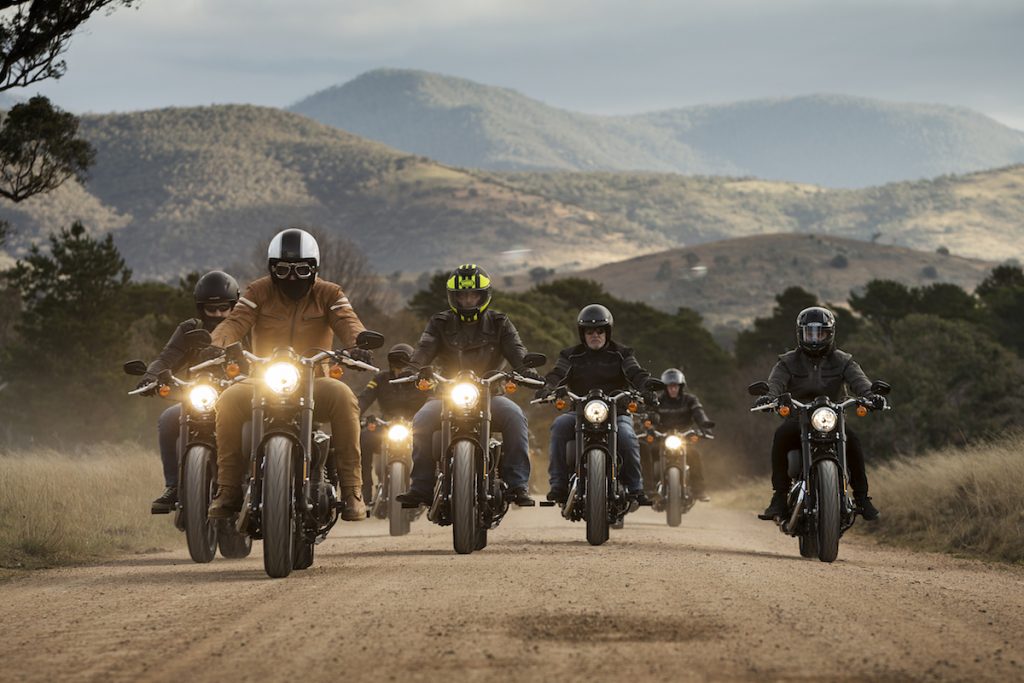
There’s no vicious initial bite from the brake package, but once they have hold of the discs there’s good feel back through the levers and the brakes have no trouble pulling up the bike in a hurry. Using ample amounts of rear trail braking is what the Roadster loves best when attacking a series of bends.
The 12.5 litre capacity of the fuel tank means the Roadster would be good for a little more than 200km at the tested 5.4L/100km, considerably better that the Forty-Eight’s peanut tank, and more than acceptable given the bike is targeted at riders wanting a short-range getaway machine or cool looking bar hopper.
The Roadster is available in three block colours; Charcoal Denim, Black Denim, and Velocty Red Sunglow as well as a two-tone Billet Silver/Vivid Black with burgundy pin striping.
The release of the Roadster continues the Harley-Davidson/Indian Motorcycle toe-to-toe with it pitched directly against Indian’s popular Scout model. Pricing for the Roadster starts from $19,494 (+ORC) compared to $19,995 (ride away) for the Scout. So there’s split hair between them on price.
Like the Scout, the Roadster is marketed at the younger generation, that will include a lot of first time Harley-Davidson buyers attracted by a new, hipper image.
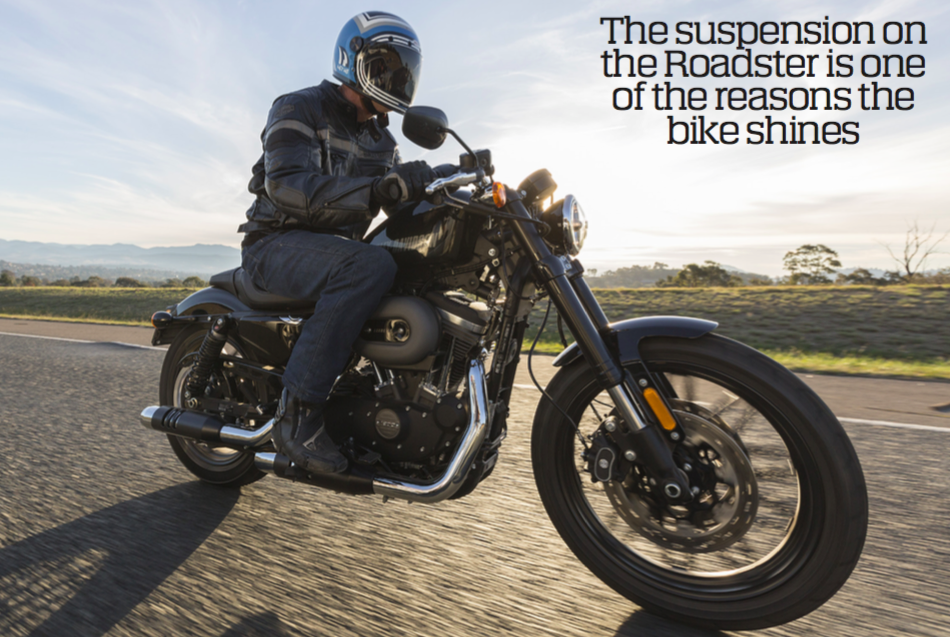
What’s to like?
Harley is marketing the Roadster as a factory garage build and that’s exactly how it feels. It’s handling isn’t top class sportsbike levels but it’s bloody good and smoothly predictable.
What’s not?
The footpeg position is the big talking point of the new Roadster. It would be good to fit a set of smaller billet ‘pegs to see if that relieves the problem of the rubber-covered ‘pegs catching the cuff of your jeans when you come to a stop.
Would I own one?
I still think about that custom XR1000, owning the new Roadster would place me one step closer to owning something similar.

TWO UP
Looking at the new Roadster it’s obvious there is no shortage of cool-looking style, but there is a shortage of is space. For a Harley-Davidson this is a small bike, not really designed with two-up riding in mind. Having said that, when you are young and single there’s nothing cooler than taking your latest squeeze for their first burn on the back of a bike, especially when they have been attracted to you based on your choice of bike. The last thing you want is to miss an opportunity to have some hot new acquaintance wrap their arms around you simply because there is no pillion facilities.
My usual test pillion pilot, the Missus, jumped on the back of the Roadster for our Sunday morning coffee run, and despite her reservations about the seating position she was pleasantly surprised, reporting that despite the size of the pillion seat pad it was quite comfortable.
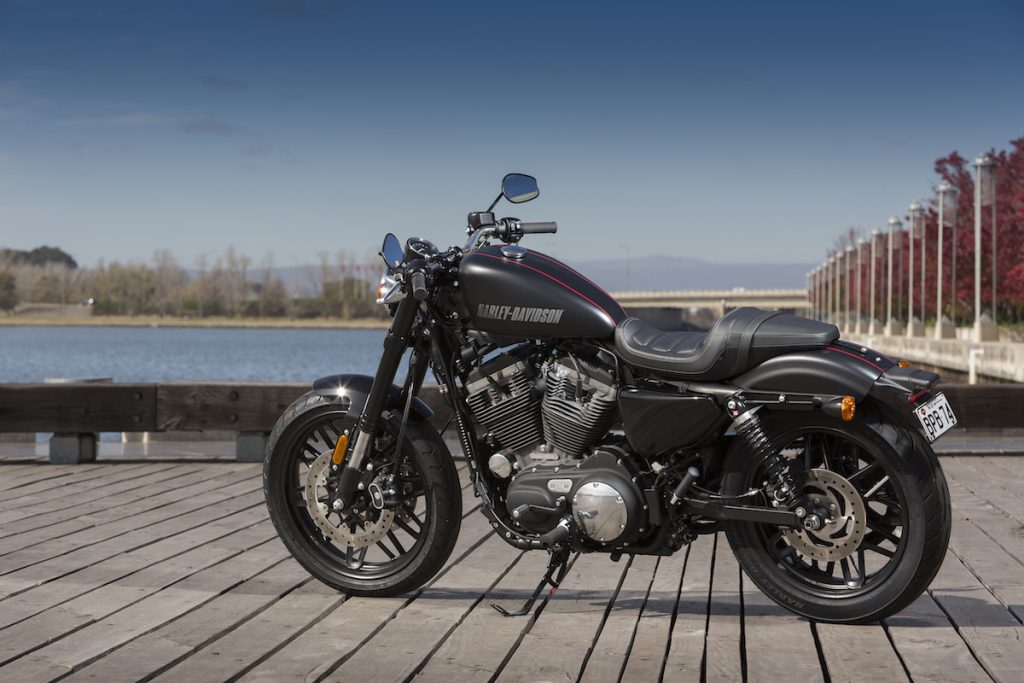
“The footpegs are a little high for my longer legs,” she said “but being perched higher than the rider allows me to see over the top and enjoy the view. Even on the back you get a feeling of nimbleness because of the slimness of the bike. Unlike a sportsbike which can get a bit jerky due to the abrupt power delivery, the Harley is a smooth ride.”
“It’s not the sort of bike I would like to be on the back of for hours on end, but for a fun cruise down to the beach or through the city it’s perfect.”
PICK OF THE BITS


